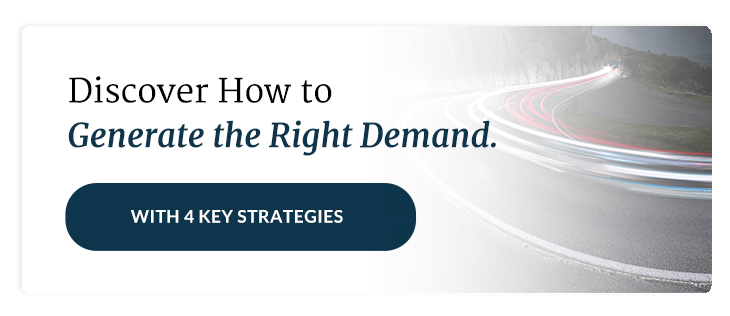
Your Guide for Using Facebook Lead Forms

In 2021, WordStream tested their theory that Facebook lead forms convert leads at a higher rate than traditional landing page forms. The results? While landing page forms had an average conversion rate of 10.47%, Facebook lead forms had a higher conversion rate of 12.54%.
One of the biggest benefits of Facebook lead forms — and something we can likely attribute this rise in conversion rate to — is the simplified process it creates for users. Rather than navigating to a landing page from an ad, Facebook lead forms enable individuals to submit auto-filled information directly from the Facebook platform. Paired with the fact that these forms are mobile responsive, the end result is a faster, seamless conversion experience for the end user.
Recognizing how Facebook lead forms can support your demand generation efforts — from the promotion of eBooks and webinars to product/service demos — let’s take a closer look at how to best leverage these forms to add more quality leads to your funnel.
First Things First: The Basics of Setting Up a Facebook Lead Ad
New to setting up Facebook lead ads? The process is simple! You can create Facebook lead ads right from the Ads Manager. All you have to do is follow this step-by-step guide. Once you complete these steps, you’re ready to run your lead ad.
How to Optimize Your Form to Generate Quality Leads
While it’s best practice to keep your Facebook lead forms short, asking more detailed short answer questions can help you get the most out of your paid media investment.
Let’s say a power connector manufacturer is promoting an eBook about how to build the case for switching power connector providers. Beyond more standard form fields like phone numbers and email addresses, you might include a subsequent question like: What is your biggest connector challenge? The answer to this question can help you gauge whether or not leads have a genuine interest in switching connector suppliers and if so, any unique challenges that have prompted this decision.
In terms of the Facebook lead ad prompting users to get to the form in the first place, the importance of clear messaging, combined with complementary graphics and videos, can’t be overstated. The more clarity users have around what to expect when they fill the form out, the more likely you are to receive quality leads.
Pair an Optimized Facebook Lead Form with Advanced Targeting
Backed by a belief in the value of personalized ad experiences, Facebook offers an array of highly-targeted ways to connect with your audience. With proper tracking on your company’s website, you can select specific ads to show to individuals who have already visited your site — and even further break this down by visits to specific product pages or blog posts. You also have the option to upload customer lists into Facebook and help bring them back into the ad pipeline.
Let’s say you’re a temperature monitoring solutions provider hosting a webinar about a new software feature that helps funnel alerts more effectively amongst personnel. You might consider using this as a retargeting ad for existing customers to help them continue to get the most out of their temperature monitoring investment.
These types of advanced targeting can further support the success of your Facebook lead ads by driving qualified leads to fill out your instant forms.
The Importance of a Good Follow-Up Process
Facebook lead forms have the power to convert high-quality leads. But without a process in place to effectively manage these leads, the conversation can stop before it ever starts.
By connecting your Facebook ads with a CRM like HubSpot, leads will automatically be added to your database. While this will save you the time of manual uploads, you’ll also have the means to automatically enter leads into predefined email workflows. Whether the goal is to share related resources that move leads down the funnel or provide a helpful guide on how to prepare for a demo, these follow-up emails ensure meaningful communications happen fast.
From these follow-ups, you can further assess the quality of leads coming through the pipeline. Whether the campaign proves to be successful or there’s room for improvement, what you learn at this stage can help you run optimized lead generation campaigns in the future — from edits to targeting strategies to modifications in offerings.
The end result is a better way to close the loop on your Facebook lead ad campaign and see real results to your bottom line.





